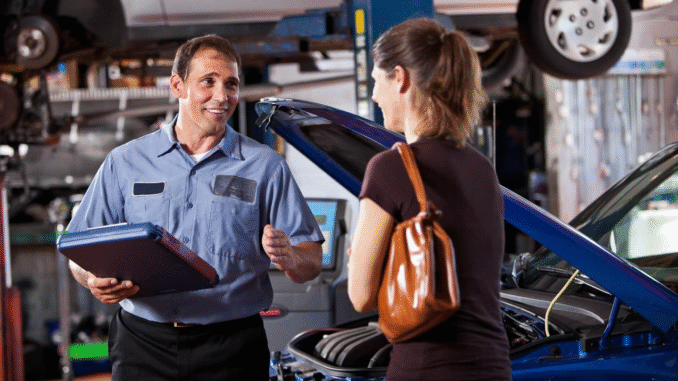
Top 10 Car Maintenance Tips to Extend Vehicle Life and Save Money
Owning a car comes with more than just the freedom of the open road—it also comes with responsibility. Proper vehicle maintenance not only keeps your car running smoothly but also extends its lifespan and saves you money on costly repairs. Many common car problems can be avoided with a proactive approach to maintenance.
Here are the top 10 car maintenance tips every car owner should follow to protect their investment and enjoy years of reliable driving.
1. Check and Change the Engine Oil Regularly
Engine oil is the lifeblood of your vehicle. It lubricates the engine’s moving parts, reduces friction, and helps regulate temperature. Over time, oil breaks down and loses its effectiveness, putting your engine at risk.
Tips:
- Check oil levels monthly using the dipstick.
- Follow your manufacturer’s recommended oil change interval, usually every 3,000 to 7,500 miles.
- Always use the correct oil type specified for your vehicle.
Neglecting oil changes can lead to engine wear, overheating, or even complete engine failure.
2. Maintain the Cooling System
Your car’s cooling system prevents the engine from overheating. This system includes coolant (antifreeze), a radiator, water pump, and thermostat.
Tips:
- Check coolant levels regularly.
- Replace coolant as recommended (usually every 30,000 to 50,000 miles).
- Inspect hoses for leaks or cracks.
Overheating can cause major engine damage, but a well-maintained cooling system keeps things running at the optimal temperature.
3. Inspect Tires for Wear and Proper Inflation
Tires affect everything from fuel economy to handling and safety. Under-inflated or worn-out tires increase the risk of accidents and reduce fuel efficiency.
Tips:
- Check tire pressure monthly.
- Rotate tires every 5,000 to 7,000 miles.
- Inspect tread depth; replace tires when tread falls below 2/32 of an inch.
- Align and balance tires annually.
Keeping your tires in top shape ensures a smoother, safer ride and can save hundreds in fuel costs over time.
4. Replace Air Filters on Schedule
Air filters prevent dirt and debris from entering your engine and cabin. A clogged air filter can reduce engine performance and decrease gas mileage.
Tips:
- Replace engine air filter every 15,000 to 30,000 miles.
- Replace cabin air filter every 12,000 to 15,000 miles, or as needed.
A clean air filter improves engine efficiency and interior air quality.
5. Monitor Brake Condition
Your braking system is critical for safety. Worn-out brake pads or malfunctioning components can increase stopping distances and lead to dangerous situations.
Tips:
- Listen for squeaking, grinding, or vibrations when braking.
- Have brakes inspected at least once a year.
- Replace pads when they reach 3mm thickness or less.
Timely brake maintenance prevents costly rotor or caliper repairs.
6. Keep the Battery in Good Shape
A car battery powers your electrical systems and gets the engine running. Extreme temperatures and age can weaken its performance.
Tips:
- Check battery terminals for corrosion.
- Test battery voltage annually, especially before winter.
- Replace batteries every 3 to 5 years or when signs of weakness appear (dim lights, slow cranking).
A failing battery can leave you stranded, but preventative checks reduce the risk.
7. Regularly Inspect Belts and Hoses
Belts (like the serpentine or timing belt) and hoses play key roles in your car’s systems. If they fail, you could face engine overheating, loss of power steering, or worse.
Tips:
- Check for cracks, fraying, or wear.
- Replace serpentine belts every 60,000 to 100,000 miles.
- Replace hoses if they feel brittle or soft.
Routine inspections help catch small issues before they lead to breakdowns.
8. Change Transmission Fluid When Needed
Your transmission needs fluid to operate smoothly. Dirty or low fluid can cause slipping, rough shifts, or total transmission failure—an expensive repair.
Tips:
- Check fluid levels monthly (if accessible).
- Change transmission fluid every 30,000 to 60,000 miles (or as advised in your owner’s manual).
- Use only manufacturer-approved fluid.
Proper transmission maintenance ensures smooth gear changes and extends system life.
9. Don’t Ignore the Check Engine Light
That little orange engine icon on your dashboard isn’t something to ignore. The check engine light can signal anything from a loose gas cap to a serious engine issue.
Tips:
- Use an OBD2 scanner to diagnose the problem.
- Visit a certified mechanic if you’re unsure.
- Never delay repairs; minor problems can worsen quickly.
Prompt action can save you hundreds—if not thousands—in repair costs.
10. Keep It Clean—Inside and Out
While it may seem cosmetic, washing and detailing your car protects the paint and undercarriage from dirt, salt, and corrosion. Interior cleanliness also preserves upholstery and prevents odors.
Tips:
- Wash your car every 2–4 weeks.
- Wax it every 3–6 months to protect the paint.
- Vacuum the interior and clean the dashboard regularly.
A clean car maintains its value, prevents rust, and just feels better to drive.
Final Thoughts
Car maintenance doesn’t have to be overwhelming or expensive. By following these 10 essential tips, you’ll extend the life of your vehicle, improve safety, enhance performance, and avoid costly repairs down the road. The key is consistency—routine care adds years to your car’s lifespan and keeps more money in your wallet.
Whether you’re a daily commuter, a weekend road-tripper, or someone who only drives occasionally, regular maintenance is an investment that pays off over time.
